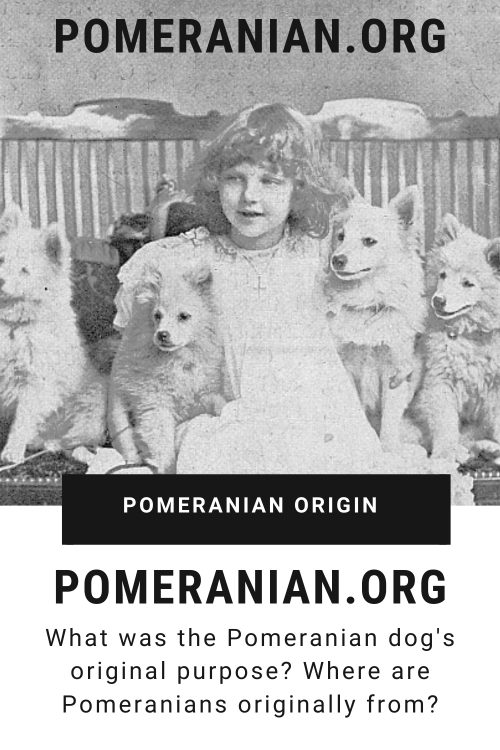Last Updated on 10/09/2023 by Dochlaggie. Post first published on September 10, 2023.
To understand today’s Pomeranians, it’s necessary to run a deep dive into the Pomeranian origin and history.
Whether they’re working dogs in the Arctic, real British Royalty, or even survivors of the voyage of the ill-fated Titanic, the Pomeranian dog breed has appeared virtually everywhere in the world, and they’re renowned for their strong character and gracious beauty.
If you have ever been an owner or enjoyed time around them, you’ll appreciate that Pomeranians are among the most energetic, lovable, and charismatic dogs on the planet.
It’s uncommon for breeds to have such a rich, deep history while simultaneously fitting the bill as one of history’s most iconic breeds. Pomeranian dogs ideally suit the bill, which they display in all they do and in each day.
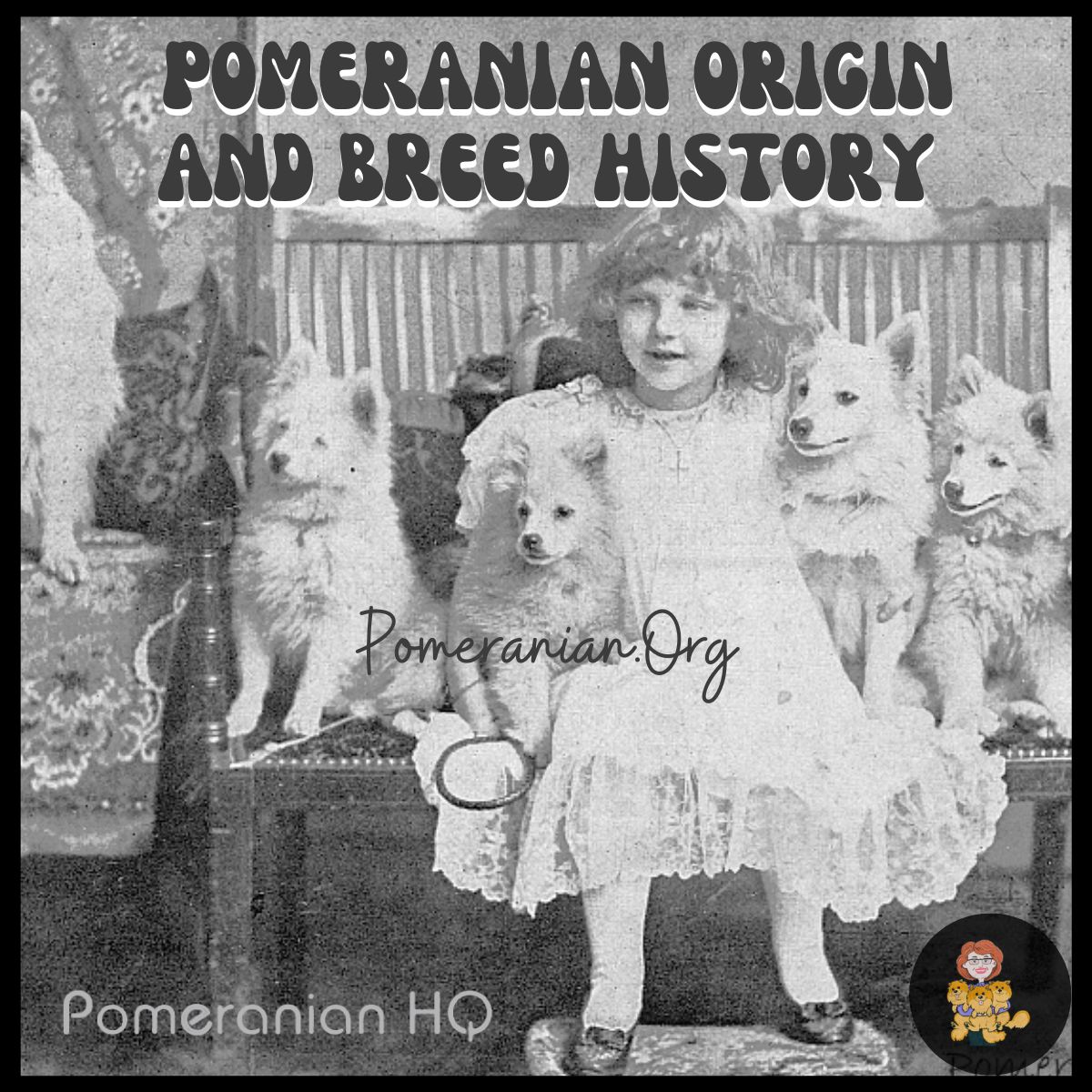
Perhaps you have wondered why your adorable Pomeranian behaves and looks like he does. Like every animal and person, their overall characteristics have been created for a long time.
Pomeranian Dog History
Now, you want to know where Pomeranians come from? Many eons ago, there was a place called Pomerania in a land bordering Poland, Germany, and the Baltic Sea.
While it’s still sometimes referenced today as a region in Poland, it’s technically a historical region.
Lakes, farms, small towns, and forests mainly covered Pomerania. However, once World War I and II, the Pomerania region had to be split, and this caused major shifts in the population.
The Pomeranian was once a larger-sized dog and now is the smallest of the Spitz dog breeds. Dogs of Spitz type have been displayed on various artifacts dating as far back as 400 B.C.
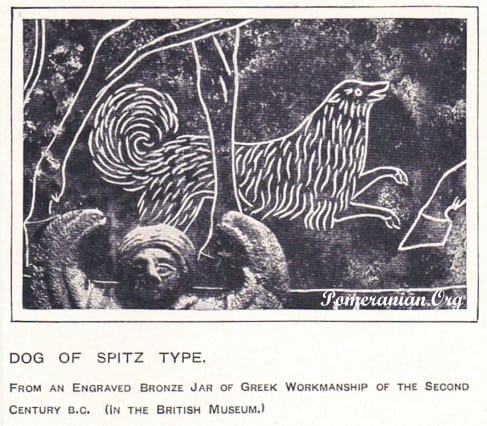
Where do Pomeranian Dogs Originate From?
The Pomeranian breed has descended from an exceptionally long line of Arctic work dogs that could be often discovered in regions that today are called the Pomeranian regions of Poland and Northern Germany.
Laugh if you will, but it’s true; today’s Poms possess a powerful link to the big, burly, strong working dogs of the Arctic when you consider they looked very much like wolves.
People have relied heavily on these dogs for many reasons, including guarding homes, pulling sleds, and protecting livestock. The smaller dogs were frequently cared for as pets and companions.
Germans didn’t accept The Pomeranian name until 1974 when they used the generic name of German Spitz for them and claimed this “German Spitz” is a German national breed.
This German Spitz was a healthy, sturdy, and strong dog. He was a big working dog, often found in the Arctic areas of Northern Europe. His original name was Wolfspitz, which referred to his small pricked ears.
Pomeranian Origin and Name
The Spitz breed is a dog family that lives in parts of Europe and Asia. Dogs of the Spitz family have prick ears, tails that curl up their backs, and a thick double coat.
“Spitz” wasn’t used for these breeds before the 15th century. However, the name “Chien-loup” was used, and it’s believed the French phrase “lou-lou” was derived from this name. Historians can’t find records about the spitz dogs before George 111 sat on the throne in England.

In Germany, various older regional names for these Spitz dogs are translated into English, becoming the Wolf Spitz, Lion Spitz, Bear Spitz, and the Great (aka Gross) Spitz.
The smaller dogs included the Fox Spitz and, a little later on, the Mannheimer Zwerg-Spitze. 1886, the Pomeranian breed was known as German Toy Pomeranians or Mannheimer Zwergspitze.
Where do Pomeranians Originate From?
The Pomeranian’s country of origin is a little blurred. The breed evolved throughout several areas of Europe and was called various names, with several types having no relationship with Pomerania.
In France, Lulu, Chien de Pomeranie, or the Lou Lou. The Wolfshond was in Holland, but during the 1780s, this name was altered to Keeshond. Italy had numerous names for this dog: Italian Spitz, Florentine Spitz, Cane de Quirinale, Lupino, and Volpino. The Italian variety was usually bright orange or yellow in color.
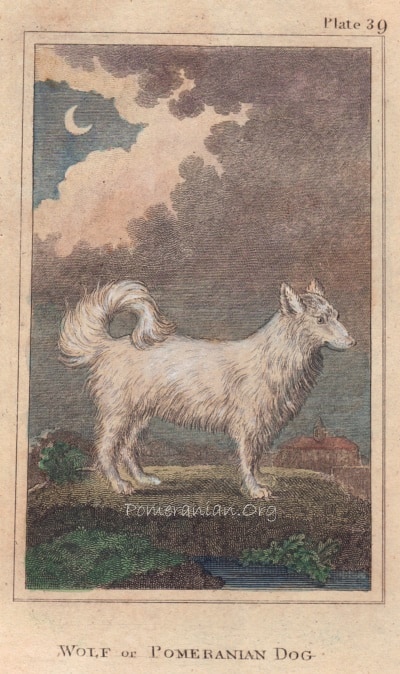
Swedish naturalist Carl Linnaeus (1707-1778) spent much time classifying dogs of his era. He mentions the Canis Pomeranus and offers plenty of evidence to support his theory that these dogs were well-known in Central and Northern Europe.
Pomeranians Developed as a Breed by English Fanciers
The Pom dog was developed as a breed and became known as the Pomeranian in England. It wasn’t until the 18th century that the Pomeranian (known then as the Wolf dog), became firmly established in England, as the breed captured the interest of members of the English monarchy.
1761 Queen Charlotte married King George 111 and brought her pet dogs to England. Queen Charlotte’s dogs were then called “wolf dogs” in type and mainly white in color.
We know the Pomeranian is named after the territory in Germany from which Queen Charlotte imported her Pomeranians: Pomerania. Queen Charlotte, at the time, referred to the breed as the Pommeranian.
English Pomeranians were usually kept as pets, and a lot of the information about these dogs is derived from various paintings.
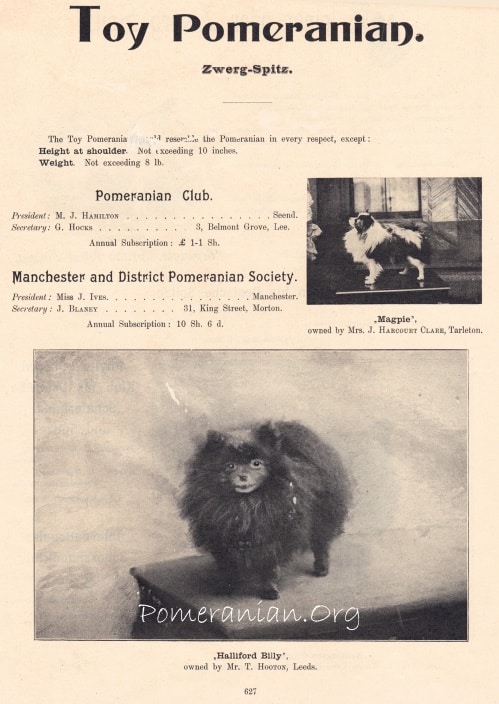
Written by William Taplin and published in London in 1803, “The Sportsman’s Cabinet” discusses the breed in detail:
“POMERANIAN; or, WOLF-DOG.
The dog so called in this country is but little more than eighteen or twenty inches in height, and is distinguished by his long, thick, and rather upright coat, forming a most tremendous ruff about the neck, but short and smooth on the head and ears; they are mostly of a pale yellow, or cream-colour, and lightest on the lower parts.Some are white, some few black, and others but very rarely spotted; the head broad towards the neck, and narrowing to the muzzle; ears short, pointed, and erect; nose and eyes mostly black; the tail large and bushy invariably curled in a ring upon the back. Instances of smooth, or short- coated ones are very rarely seen; in England he is much more familiarly known by the name of fox-dog, and this may originally have proceeded from his bearing much affinity to that animal about the head; but, by those who in their writings describe him as a native of Pomerania, he passes under the appellation of the Pomeranian-dog.“
William Taplin “The Sportsman’s Cabinet”.
Training Method for These Working Dogs From The Sportsman’s Cabinet:
“The manner in which these animals are trained to their singular employment has so powerful an influence on the individual properties of the whole species, that the description of it will not prove un- interesting even to the philosophic reader. For proper draught-dogs, the choice is principally made of such as have high legs, long ears, a sharp muzzle, a broad crupper, a thick head, and who discover great vivacity.
As soon as the puppies are able to see, they are thrown into a dark pit, where they remain shut up till they are thought able to undergo a trial. They are then harnessed with other seasoned dogs to a sledge, with which they scamper away with all their might, being frightened by the light, and by so many strange objects.
After this short trial, they are again confined to their gloomy dungeon, and this practice is repeated ’till they are inured to the business of drawing, and are obedient to their driver.”
William Taplin “The Sportsman’s Cabinet”.
Pomeranians Made an Impact in England After 1870
In 1859, Newcastle was home to the very first English dog show, and in 1861, another one was held in the Belle Vue Zoo, Manchester.
Mr. Bennett owned a Pomeranian Fox Dog that won as a non-sporting foreign dog in his class. In the same year, Mr. J.H. Seed exhibited his dog (Jack) in Birmingham, after which the owner made the dog available at ten guineas.
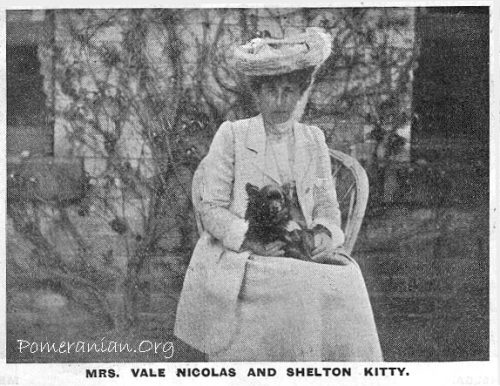
December 1862 saw three Pomeranians as exhibits in Birmingham as part of the Third Annual showing for Sporting and other dogs. They were classified in an extra class that accounted for small foreign dogs not used for field sports.
Pomeranians Entered at This Show Were:
• “Alba,” owned by Robert Thornley.
• “Charlie,” owned by Mr. C. Bradley.
• “Pop,” owned by Mr. J.A. Browning.
All three owners resided in Birmingham.
There were 12 dogs in that class, including a Volpino Roman (aka Pomeranian), a Maltese, a Prussian Terrier, a Russian dog, and “Willie,” bred in France.
In 1863, Pomeranians had classes at London’s Great International Dog Show for the first time.
The top three Pomeranians at the International show were:
1st – “Snap,” owned by Mr. Laskie.
2nd – “Guess,” owned by Mr. St. Quintin.
3rd – “Fox,” owned by Mr. Eaton.
During 1863, several Pomeranians were exhibited in different parts of England.
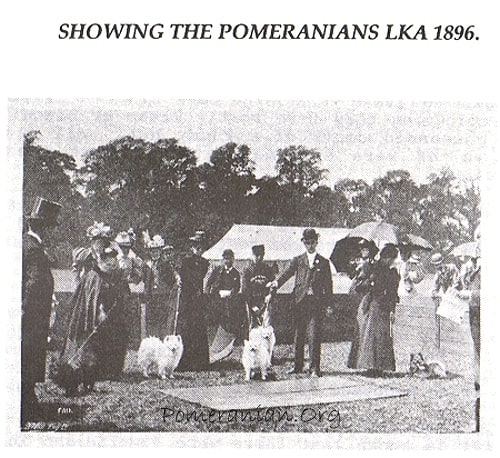
English Kennel Club Registered the Breed as Pomeranian
The Pomeranian Club was established by nine members in 1891. This first Pomeranian club was launched on February 11th, 1891, at the Agricultural Hall, Crufts Dog Show.
There was a growing interest by breeders in reducing the size of the dogs they were breeding, but also in producing new colors.
The whites and blacks no longer ranked top positions in breeding programs and the show ring. Now, there were other colors such as orange, sable, blue, and chocolate.
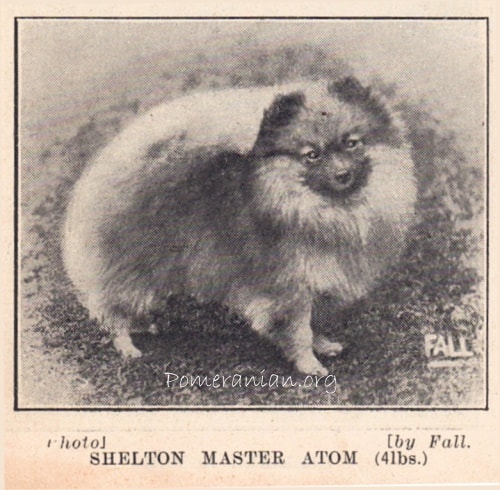
After reading numerous rare and old dog books, we have learned that the glorious colors now available weren’t even a spot on the horizon during the early development of the Pomeranian breed.
During this period, shows provided classes for small, medium, and big dogs, and it took the English Pomeranian Club much longer to settle on a suitable weight range for these amazing dogs.
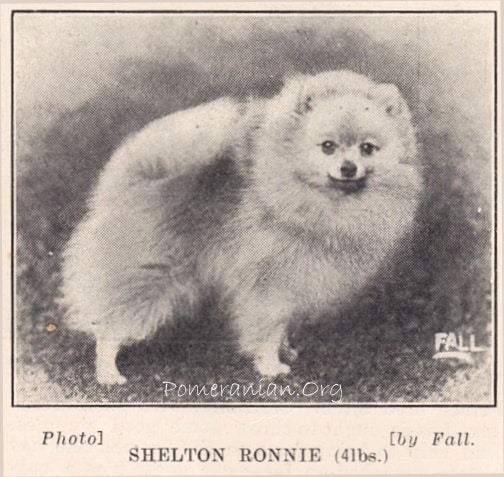
The initial Pomeranian breed standard is dated 1898. 1909 saw a revised and much-improved breed standard drawn up. A meeting occurred at the Pet Dog Show with representatives from all the Pomeranian Club’s contributing.
Reports from this meeting indicate the 1909 Pomeranian standard harmoniously embodied the views of all the Pom Clubs.
These Clubs included the Pomeranian Club, North of England Pomeranian Club, East Lancashire Pomeranian Club, and Midland Pomeranian Club.
The standard of points allotted:
- Appearance 10 points
- Head and Nose 10 points
- Ears 5 points
- Eyes 5 points
- Neck and Body 15 points
- Legs 10 points
- Tail 5 points
- Coat 25 points
- Color 15 points
This breed standard then went on to note, “Where classification is not by colors, the following is recommended for adoption by show committees:-
- Not exceeding 7lbs ( Pomeranian Miniatures )
- Exceeding 7lbs ( Pomeranians)
- Pomeranians and Pomeranian Miniatures mixed.”
Finally, it was agreed that Pomeranian Miniatures weighed under 7lb. All the other Pomeranians were “oversized,” with 20lb being the heaviest weight allowed.
First Pomeranian Champion
The first Champion of the Pomeranian dog breed was a white Pomeranian named “Rob of Rozelle. “
The Pomeranian Dog in U.S.A.
American Pomeranians originated from imported Poms, mostly from England. During the late 1880s, Pomeranians started appearing in various shows in the United States of America, where, in 1900, the country’s Kennel Club officially recognized this breed.
Before this official sanction, the breed had to participate in the miscellaneous class. Which had no winners class, which meant championship titles were unavailable during this period for the breed. The first Pomeranian known to be shown in America was Sheffield Lad in New York in 1892.
In 1896, Pomeranians Prince Bismarck was 2nd and Wolfgang 3rd in the Miscellaneous Class. Kansas City, in 1898, saw the Pomeranian Clayton Chieftain win the Miscellaneous Class.
During 1899, interest in the breed increased, and many quality Pomeranians arrived from England.
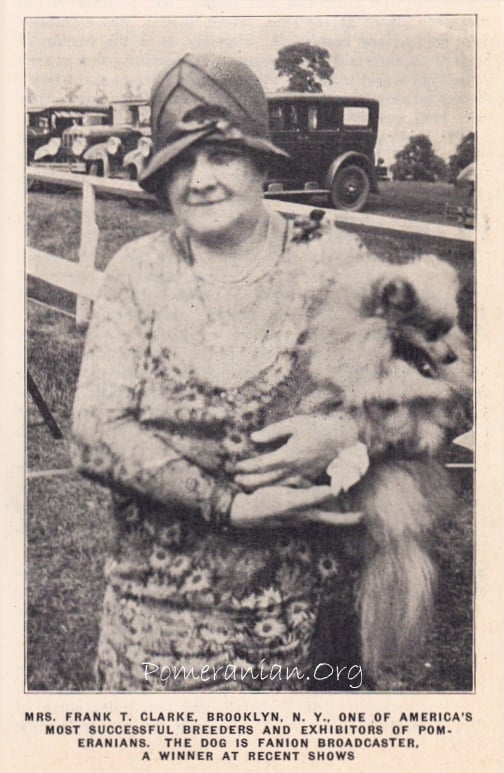
White, blue, and brown were the most popular colors. In about 1900, the American Kennel Club recognized the breed and approved admission to the studbook.
The New York Show, 1900, was the first to hold a winners class for Pomeranians. A brown dog, Nubian Rebel, owned by Mrs. Frank Smyth, won this first award. Nubian Rebel later became a Champion.
In 1901, the New York Show was judged by Mr. R.F. Mayhew, and Hatcham Nip was placed first. Hatcham Nip later became the breed’s first International Champion. Mrs. R. F. Mayhew and Mrs. George Thomas were the leading Pomeranian exhibitors during this period.
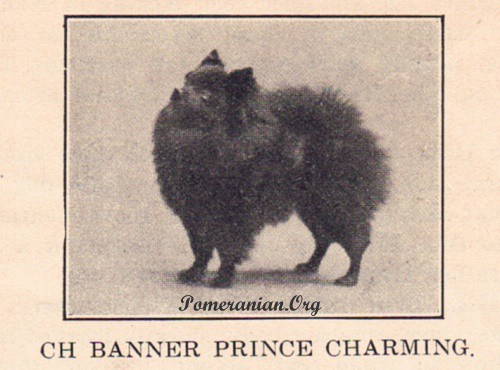
The American Pomeranian Club was founded in 1900 by Mrs. Hartley Williamson and Mrs. Frank Smyth. In 1909, it became a member club of the American Kennel Club and thus became the Pomeranian parent club.
1911 saw the very first Pomeranian breed show in the U.S.A. With 138 Pomeranians entered under English Judge Mrs. L.C. Dyer. Best of Breed was awarded to a black dog, Champion Banner Prince Charming, owned by Mrs. Frank Smyth of Swiss Mountain Kennels.
One Judge described Champion Banner Prince Charming as “a charming black, good type, but too coarse in the skull.”
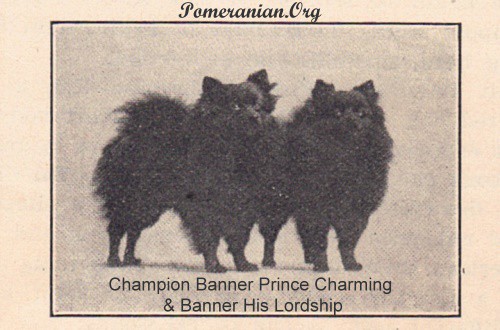
The second Pomeranian Show, hosted by the American Pomeranian Club in 1912, was held in New York. Charles G. Hopton judged the entry of 185 Poms. Best of Breed, at this show, was the English import, Champion Offley Kew Marco.
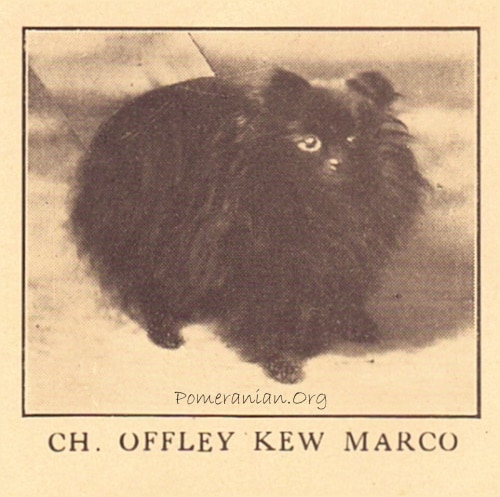
Pomeranians at Westminster
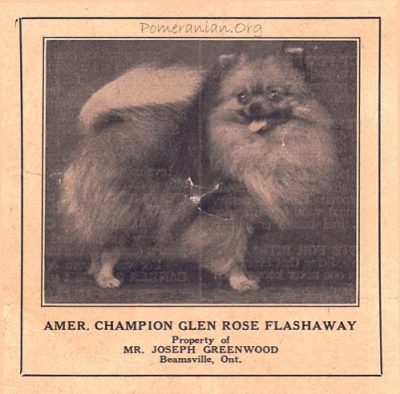
American Champion Glen Rose Flashaway, owned by Joseph Greenwood, was the first Pomeranian to win Best Exhibit in Group at the Westminster Dog Show. Many other Pomeranians have followed Rose Flashaway’s paw steps.
Pomeranian Group Winners at Westminster Kennel Club Show
- 1926 Champion Glen Rose Flashaway, owned by Joseph Greenwood
- 1927 Champion Little Rajah, owned by Mrs. V. Matta
- 1928 Champion Bogota Firebug, owned by Miss E. G. Hydon
- 1931 Sealand Career, owned by Radiant Kennels
- 1935 Wonder Son, owned by Miss E. G. Hydon
- 1936 Champion Salisbury Sensation, owned by Mrs. Andres W. Rose
- 1942 Champion Moneybox Currency owned by Mrs. V. Matta
- 1947 Champion Little Tim Stepper, owned by Mrs. V. Matta
- 1948 Pomwin Doreen, owned by Mrs. Blossom M. Sandy
- 1962 Champion Pixietown Serenade of Hadleigh owned by Ruth Belleck & Lady Florence Conyers
- 1967 Champion Leader’s Little Buck-a-Roo, owned by Ina F. Kniffin
- 1971 Champion Duke’s Lil Red Baron O’Kala, owned by Mrs. Joyce Graves
- 1979 Champion Lennis’s Tar Lacy Foxfire, owned by Edward B. Jenner
- 1988 Champion Great Elms Prince Charming II, owned by Skip Piazza & Olga Baker
Mrs. V. Matta was the proud owner of 3 Westminster Group-winning Pomeranians but never achieved Best in Show at the Westminster Kennel Club Show.
It was not until 1988 that a Pomeranian called Ch. Great Elms Prince Charming II was awarded Best In Show at Westminster.
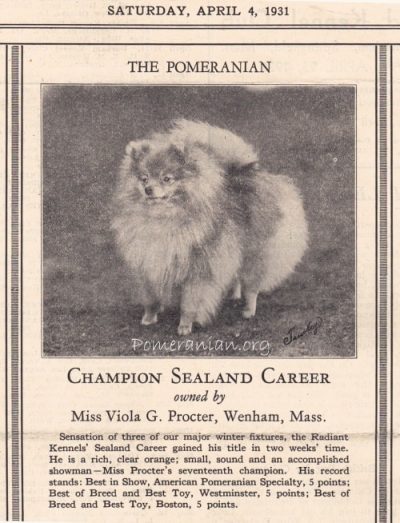
Early American Pomeranian Dogs
In the early days of American dog shows, Pomeranians showcased a more delicate bone structure, larger ears, and typically weighed less than six pounds. Their defining features included a distinct type and a commendable coat texture, even if it was less voluminous than the plush coats we frequently observe today.
Intriguingly, while there have been subtle evolutions in appearance over the decades, the fundamental type of the Pomeranian has largely remained consistent. When we trace back to the early 1900s and compare those Pomeranians to the gracing show rings in contemporary times, there’s a remarkable continuity in their breed characteristics.
This enduring consistency is a testament to the breed’s strong genetic lineage and the dedicated breeders who have prioritized preserving its unique traits.
Royal Interest in The Pomeranian Dog Assured His Popularity
This adorable dog was now known and loved throughout England. A great deal of the credit for this adulation goes to Queen Charlotte’s granddaughter, Queen Victoria, whose enthusiasm for Poms thrust the breed directly into the public eye.
Queen Victoria made the Pomeranians extremely popular, more so than during her grandmother’s reign. Her royal Pomeranians often traveled with her.
The royal train contained a special compartment for her Poms, and they even had their own security detail to guarantee their security and safety and help ease her mind. When lying on her deathbed, Queen Victoria asked for her favorite Pom to keep her company.
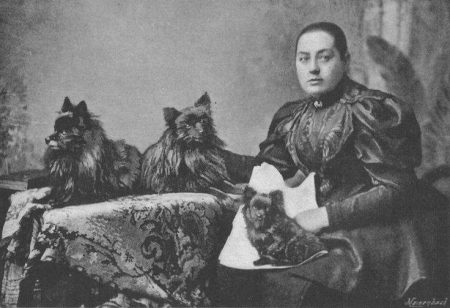
Queen Victoria was listed as one of the leading breeders, along with Mrs. Thomas, Mrs. Gordon Lynn, and Miss Hamilton, for a couple of years. The Queen’s “Marco” won the Club’s gold medal.
Mrs. Thomas brought dogs from Germany to improve the quality of her stock. Miss Hamilton owned dogs of different colors but concentrated on breeding whites.
Pomeranians were exchanged for large sums of money. There was a strong craze for breeding dogs that were smaller than ever, often through very close inbreeding, and results included apple heads, popeyes, unsoundness, and weediness.
The mortality rate during whelping was incredibly high. By 1916, the bigger Pomeranians no longer appeared in the shows, with only the “Toy” size remaining.
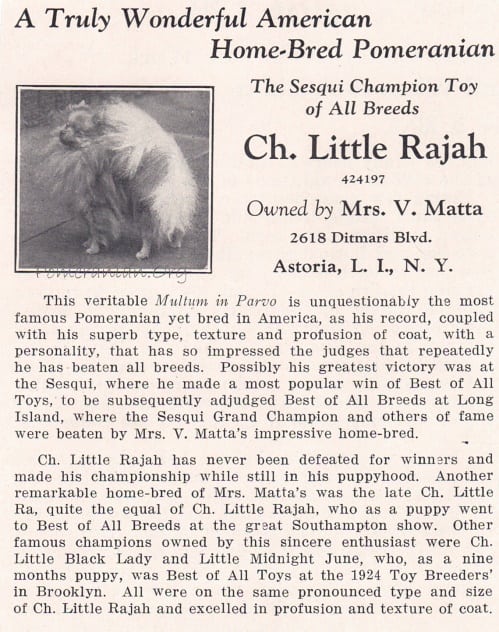
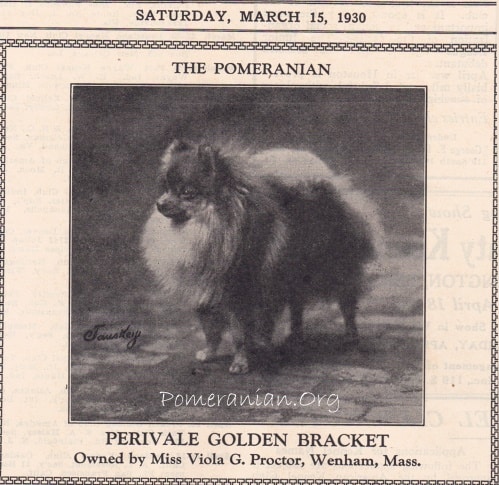
Pomeranian Origin Conclusion
In the journey through the world of the captivating Pomeranian, we’ve delved deep into their distinctive characteristics, playful nature, and the joy they bring to families worldwide.
But understanding the Pomeranian’s origin is like peeling back the layers of a rich, historical tapestry. This origin story, rooted in the icy terrains of the Pomeranian region, offers a glimpse into how these little canines evolved into the delightful companions we cherish today.
At Pomeranian Headquarters, we believe that to appreciate the beauty and charm of these fluffy pets, one must understand their history. This blend of past and present makes every Pomeranian not just a pet but a testament to a legacy that has traveled through time.
Whether you’re a seasoned Pomeranian lover or a new fan, remember the depth of their origin, and you’ll find an even deeper love for these extraordinary canines.
Copyright Pomeranian.Org. All Rights Reserved.
References and Further Reading:
[1] Denise Leo “The Pomeranian Handbook“.
[2] Milo G. Denlinger “The Complete Pomeranian”.
[3] Kimbering Pomeranians “1891-1991”.
[4] William Taplin “The Sportsman’s Cabinet”.
[5] E. Parker “The Popular Pomeranian”.
[6] Lilla Ives “Show Pomeranians”.
